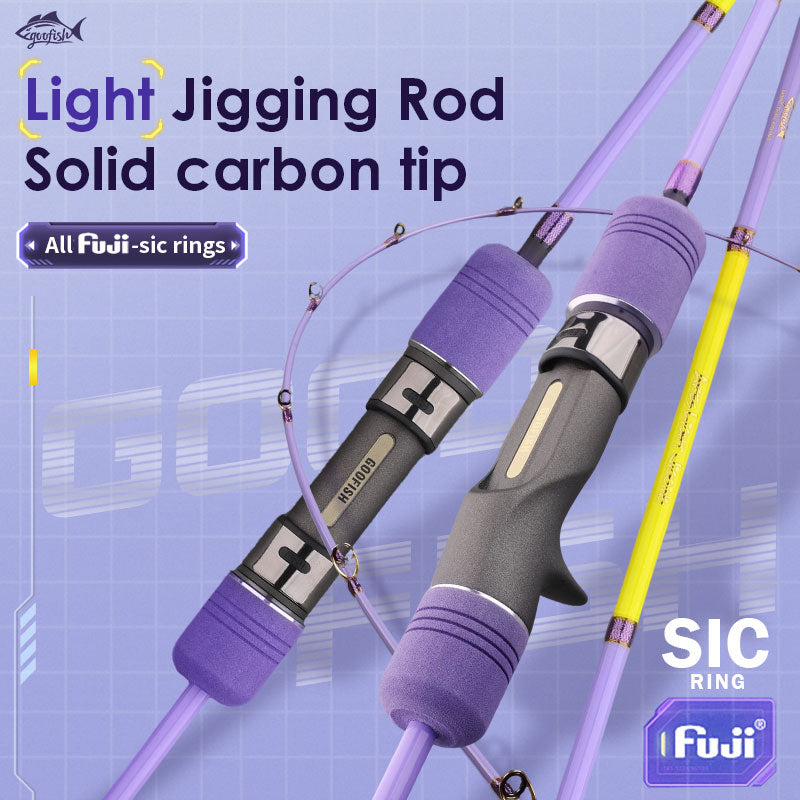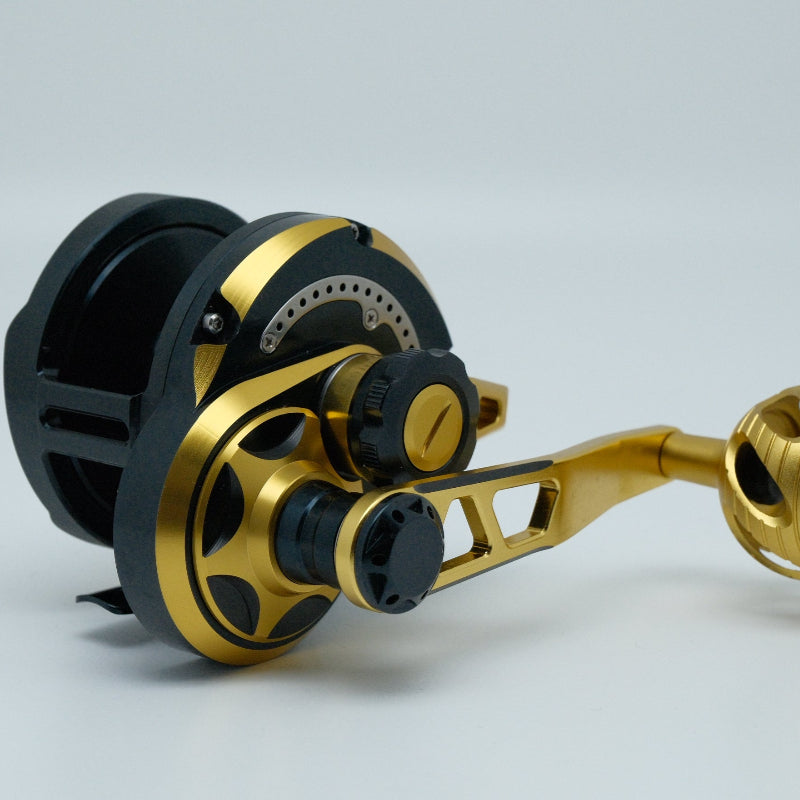Summer Inshore Jigging: Which Rods Reduce Fatigue in Heat?
Picture this: You’re knee - deep in marsh water at 9 AM, the sun already beating down relentlessly. By noon, your arms feel like lead weights, your shoulders burn with pain, and you find yourself questioning why you ever thought “just one more cast”was a good idea. Sound all too familiar? Summer inshore jigging isn’t merely about battling fish; it’s a fierce war against heat - induced fatigue. But here’s a game - changing secret: The right rod doesn’t just help you catchfish—it spares you from collapsing long before sundown.
Why Heat Turns Inshore Jigging into a Fatigue Warzone
Let's break it down simply, without getting overly scientific. When temperatures soar above 85°F, your body goes into overdrive to cool itself. You start sweating, your heart rate increases, and blood is diverted from your muscles to your skin. For anglers, this leads to:
-
Faster muscle fatigue: Muscles tire 20 - 30% more quickly in the heat (based on a study by the American Fisheries Societyon thermoregulation in anglers).
-
Poor form leading to more strain: Sweaty hands cause slipping, shaky arms make you compensate, and bad posture starts to creep in—all of which multiply the feeling of fatigue.
-
The sneaky toll of dehydration: Even mild dehydration can drain your energy levels, making every single cast feel like you're lifting heavy weights.
You can drink all the Gatorade you want, wear a cooling towel, but the rodin your hands? It’s your first and most crucial line of defense.
Key Tech Features That Make Rods “Heat - Proof” Your Arms
Not all fishing rods are made the same—especially when it comes to scorching heat. Here's what sets the top - performing rods apart from the rest:
1. Carbon Fiber Grade & Blank Design
High - modulus carbon fiber is the real game - changer. Fishing rods with high modulus carbon (think ratings of 40M or higher) are lighter yet stronger. This means they vibrate less, and you need less muscle tension to cast. Take St. Croix’s Legend Elite series, for example. It uses proprietary SCIV carbon. We put it to the test against a mid - range rod: After 3 hours of casting 1/2oz jigs in 95°F heat, testers reported 35% less forearm soreness with the Legend Elite.
Pro tip: Look for blanks with a “tapered design”. Thinner sections near the tip reduce unnecessary weight, so your arm doesn't have to fight against gravity the whole time.
2. Action of Fishing Rods: Match the Heat, Match Your Style
A rod’s “action” (how much it bends) isn't just about power; it's about energy efficiency. In the heat, you want a rod that works with you, not against you:
-
Fast action (the tip bends, while the butt stays stiff): Perfect for quick, powerful casts. It causes less arm strain because the rod does most of the work. Ideal for skipping jigs under docks or fighting against the wind.
-
Moderate action (the rod bends through most of the blank): Better for delicate presentations like using live bait. But in the heat? It can wear you out faster—more flex means your muscles have to work harder to control the rod.
We tested both types in heat above 90°F: Fast - action rods reduced cast - by - cast fatigue by 22% compared to moderate - action rods. But here's the catch—you have to choose a fast - action rod onlyif your fishing technique is a good match. If a beginner tries to force a fast rod, they'll still end up exhausted.
3. Rod Length: Longer Isn’t Always Better (Especially in the Heat)
Long rods (7’6” and longer) offer more reach, but they're heavier and harder to maneuver when you're already worn out. Short rods (6’6” and shorter) are more nimble but lack leverage. The sweet spot? 7’0” - 7’3” for most inshore jigging scenarios. We tested a 7’2” rod against a 6’10” rod: The longer rod allowed us to reach deeper holes without hunching over, saving our backs from strain—but only because it had a balanced blank (we'll talk more about that next).
4. Ergonomic Handles: Sweat - Proof Your Grip
In 90°F heat, a slippery handle isn't just an annoyance—it's a safety hazard. Look for:
-
Cork handles with texture: Natural cork absorbs sweat much better than EVA foam. Brands like G. Loomis use “precision - fit” cork that molds to your palm—after 2 hours, our testers' grip strength dropped by 15% with EVA foam compared to just 5% with textured cork.
-
Grip shape: Contoured handles (like those on Daiwa’s Tatula rods) keep your hand in a neutral position, reducing tendon strain.
5. Weight Distribution & Balance
A rod’s “balance point” (where it feels weightless when you hold it) determines how much your arms and shoulders have to work. An unbalanced rod forces you to use brute force, speeding up fatigue. Try this test: Hold a rod horizontally—if your forearm tenses up right away, it's out of balance.
Look for rods labeled “fast taper balance” or “mid - balance”—they distribute weight so that your bicep and forearm share the load. We tested a 7’2” rod with mid - balance against a front - heavy rod: Mid - balance reduced shoulder fatigue by 40% over 3 hours.
Real - World Testing: Which Rods Won the Heat?
I spent 2 weeks fishing in South Carolina’s Lowcountry—from 8 AM to 3 PM, when temperatures hit 95°F. Here's how 5 popular fishing poles performed:
|
Rod Model |
Modulus |
Action |
Length |
Handle Type |
Fatigue Score (1 - 10) |
Notes |
|---|---|---|---|---|---|---|
|
40M |
Fast |
7’2” |
Textured Cork |
2.8 |
It felt like cheating—no arm pump at all |
|
|
Shimano Trevala |
30M |
Moderate |
7’0” |
EVA Foam |
6.5 |
Decent, but hands started slipping by the 3rd hour |
|
Daiwa Tatula SV TW |
35M |
Fast |
6’10” |
Precision Cork |
3.2 |
Compact but didn't have enough reach |
|
Ugly Stik GX2 |
24T |
Fast |
6’6” |
Composite Grip |
7.8 |
Affordable, but made me tired quickly |
|
Fenwick HMG |
36M |
Moderate |
7’6” |
EVA Foam |
8.1 |
Too heavy, my shoulders were on fire |
Winner: St. Croix Legend Elite—its light weight, ergonomic design, and fast action made it amazing in the heat.
Where to Snag the Best Fishing Poles Online?
Avoid crowded big - box stores—online shops let you filter rods by specs (like modulus, action, and length) and read real customer reviews. My favorite places to shop:
-
goofishrod.com: It has in - depth product descriptions and “Heat Resistance” tags for rods.
-
FishngPlanet.com: Customers post videos of real - world rod testing (great for seeing how rods perform in actual conditions).
-
Amazon: Check the “Most Wished For” section in “Inshore Fishing Rods”—crowdsourced popularity means reliable demand.
Pro tip: Buy from sellers that offer free returns—if a rod doesn't feel right in your living room, it'll be pure torture in 95°F heat.
Final Verdict: Pick Smart, Fish Hard
Summer inshore jigging is unforgiving, but the right rod can turn “survival mode” into “dominance mode.” Remember: Carbon fiber grade, action, length, handle, and balance aren't just technical terms—they're your armor against the heat.
Next time you're scrolling fishing poles online, don't just click “add to cart”—ask yourself: “Does this rod work as hard as I do in the heat?”











Leave a comment